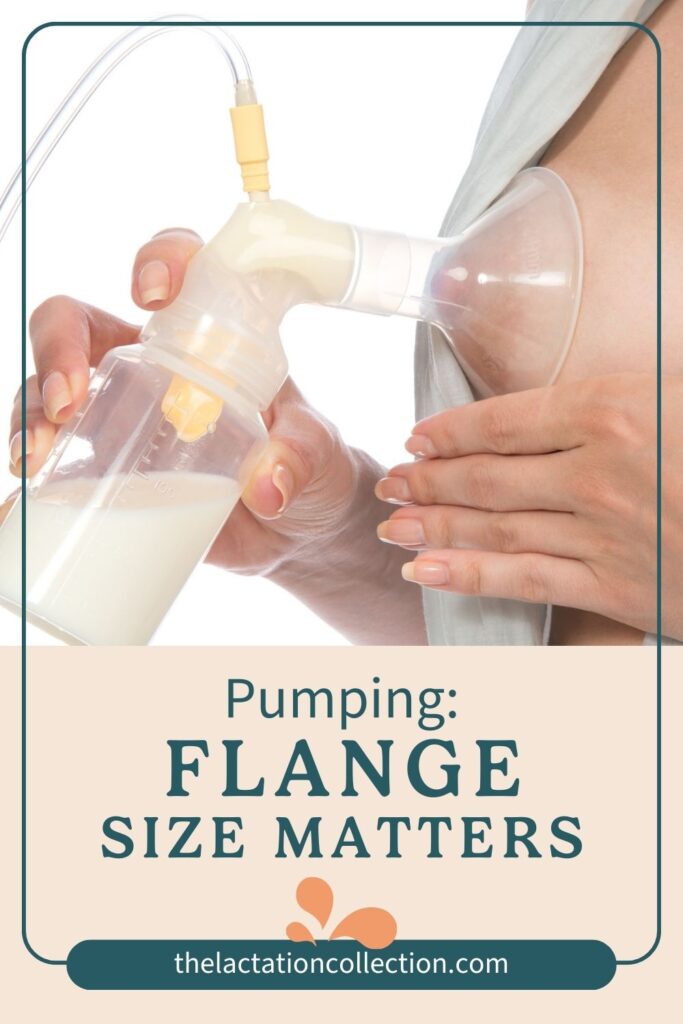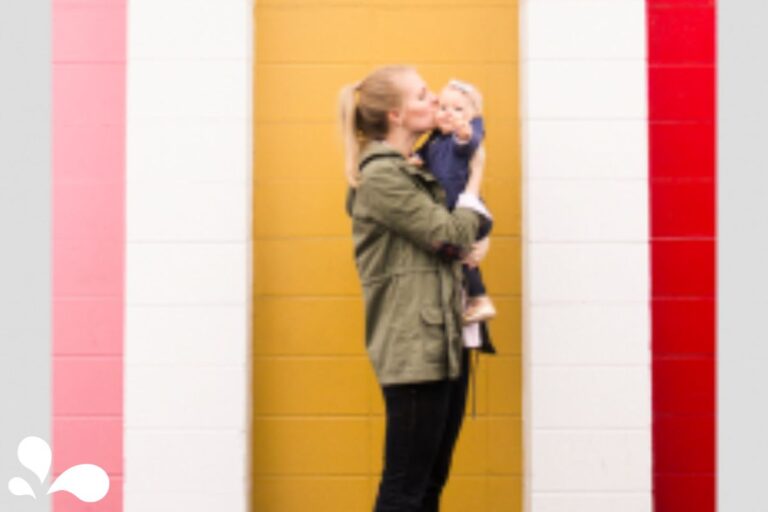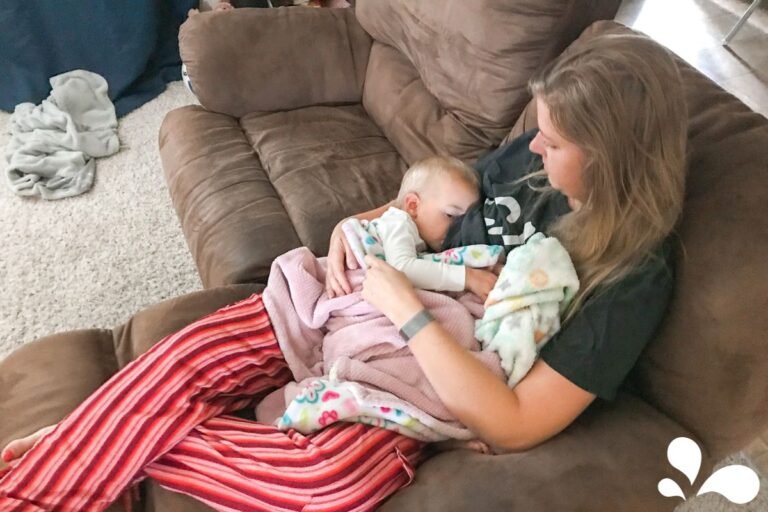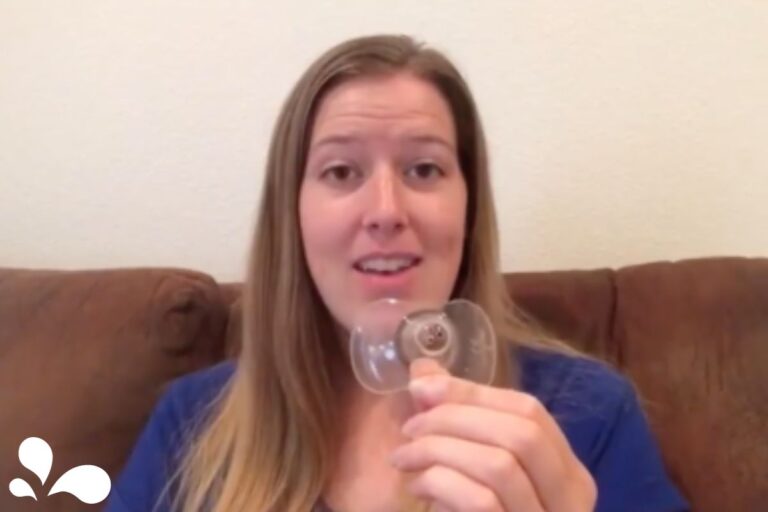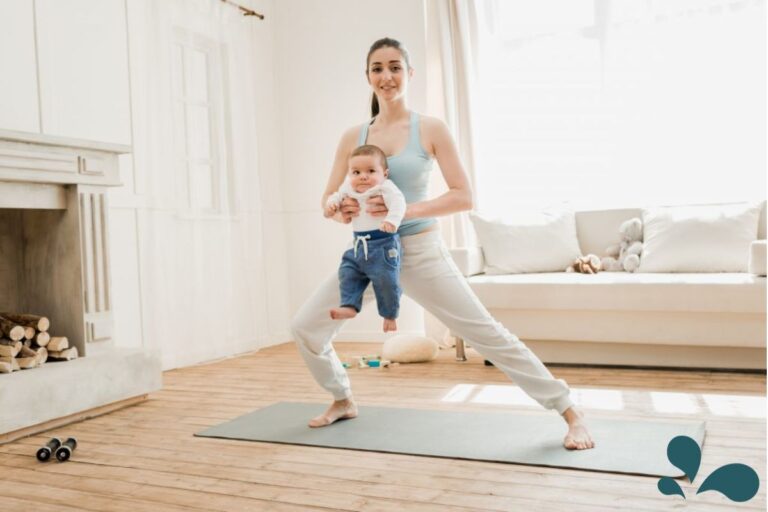Every new mom with a brand new breast pump has this same experience. Imagine it: you’re opening your new pump for the first time. You’re excited and ready to give it a whirl. But wait. There are multiple sizes of flange! And what is a flange?!
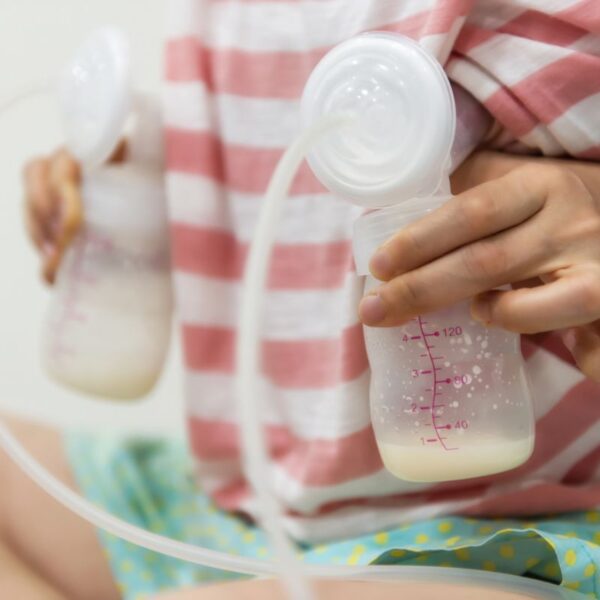
When should you start pumping?
Typically, you shouldn’t start pumping until three to four weeks postpartum, allowing your breastfeeding relationship to solidify and your supply to develop and regulate… Read the full blog post >>
A flange is a funnel-like piece that attaches your breast to the pump; sometimes, it is referred to as a breast shield. Your breast pump may come with one or two sizes of flanges for you to use. But how do you know which one to use, or if those are even the correct size for you? And does it matter what size flange you use?
Yes, it matters. Here is why.
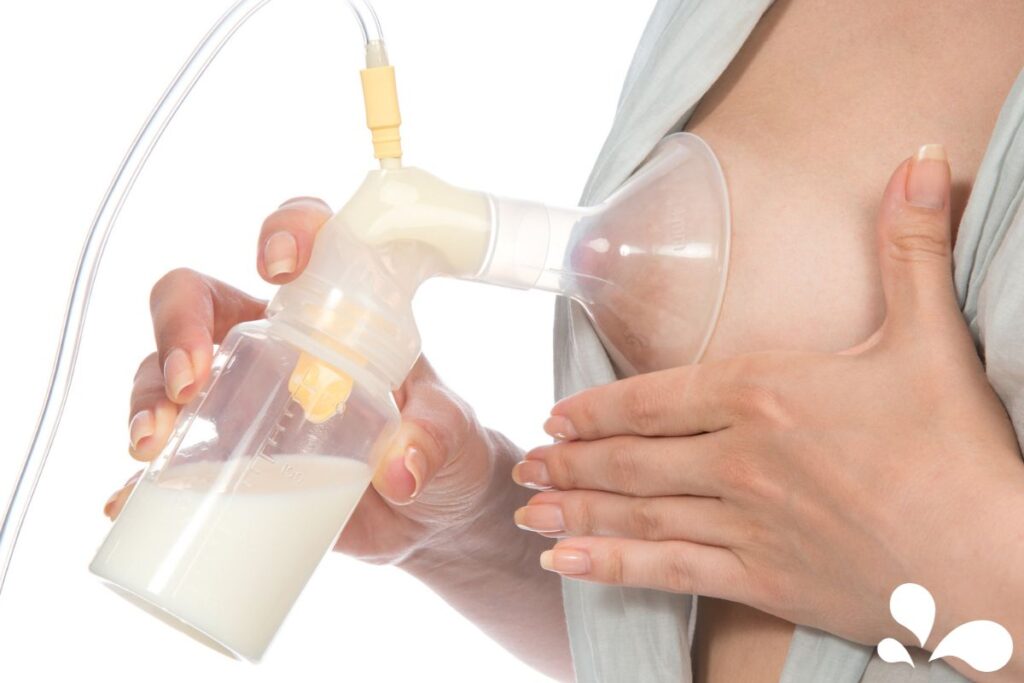
Using the correct size flange goes beyond comfort while pumping. If you are using the proper size, you will remove milk more effectively from the breast and prevent injury to your nipple.
Keep in mind that nipple size may change over time while pumping and you may need to increase your flange size later on.
You may also find that each breast needs a different size flange.
How to measure your nipples for a correct fitting pump flange
Below you will find a guide on how to measure yourself to know which size flange you need. If you need help with this you can always schedule a consultation with Anna to discuss breastfeeding, pumping, flange size, supply, or anything else you may need help with while breastfeeding.
Step one: Measure your nipple.
Measure your nipple by using a tape measure or circular millimeter measurement product like this or this (be sure to not include your areola in this measurement). You can also use this free printable nipple ruler.
Step two: Determine which size flange you need.
Once you have a measurement in millimeters (mm), determine which size flange you need. Flanges come in sizes 21, 24, 28, 30, and 36 (sizes may vary between pump brands). Each of these sizes is up to the size listed. For instance, if your nipple is 19 mm, you’d order a 21 mm flange. If your nipple is 32 mm, you’d order a size 36 mm flange. You need to size up when you’re in-between sizes.
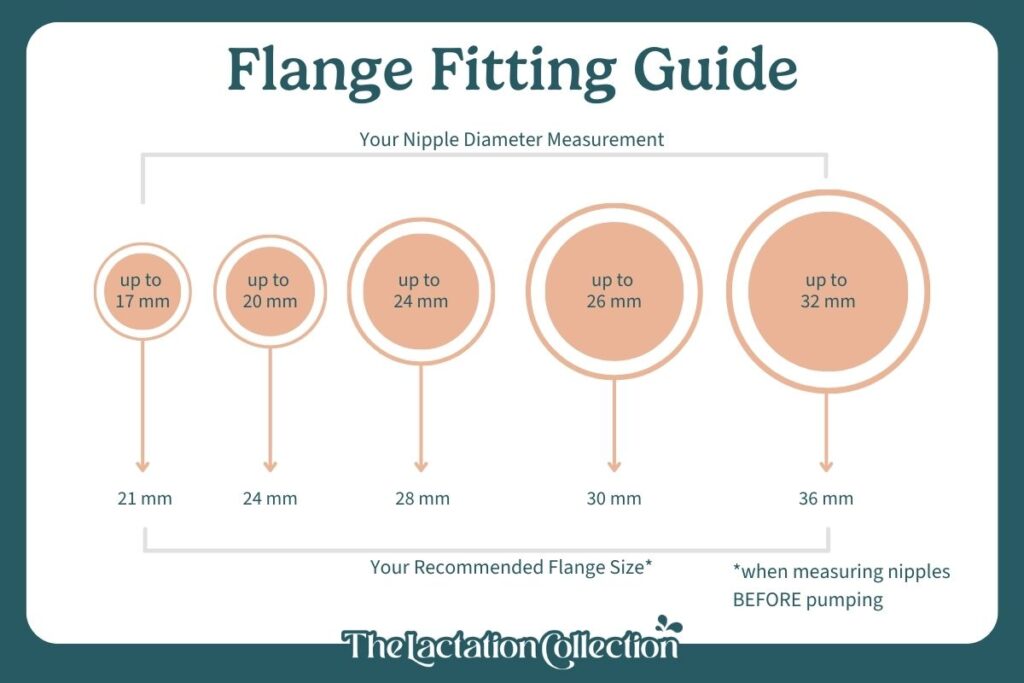
Step three: Order a new size or a backup piece
Once you have measured your nipples and discovered what flange size you need, you can go through the same company you received your pump from and order the new size or order it on Amazon.
Here you will find the Amazon links for the Spectra flanges, Medela flanges, and Ameda flanges. The great thing about using these links is that the products reach you more quickly; however, there are plenty of other places you can order flanges from which you can find with a quick Google search.
If you measure between sizes you can also purchase flange inserts, or cushions, to make your flange sizing just right.
Step four: Test your breast flange’s sizing.
Center your nipple in the flange, turn on the pump. When it begins to suction, you want to look for your nipple being sucked into the tunnel portion of the flange, but it shouldn’t bring any of your areola into the tunnel, nor should it flatten out your nipple. You want to see your nipple freely moving inside of the flange, and your nipple should appear rounded-out.
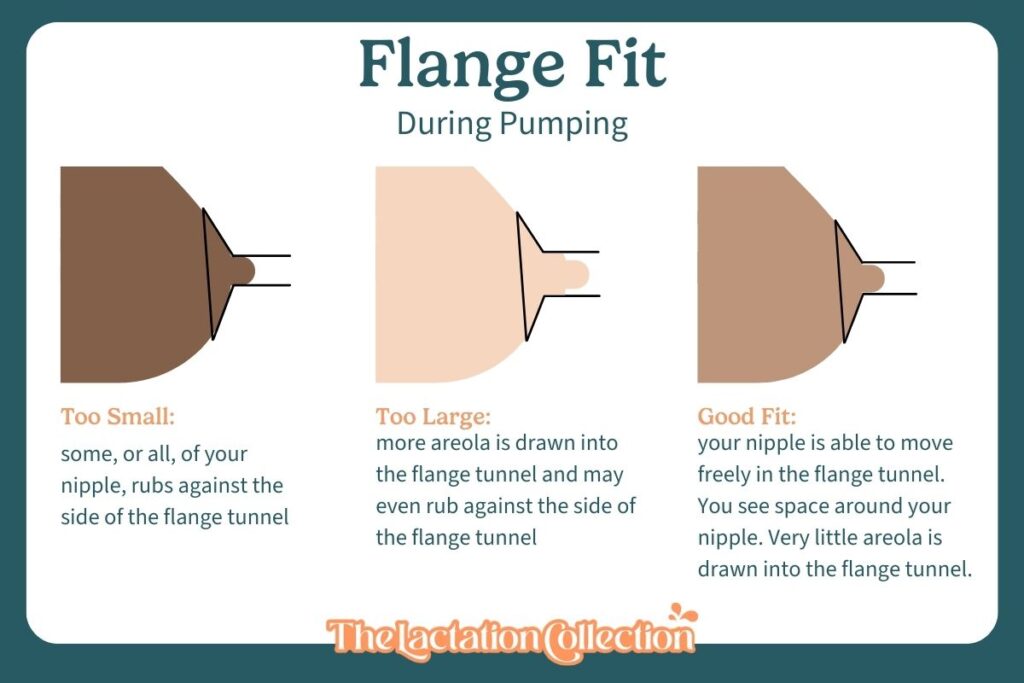
Helpful Products
As mentioned above, sizing tools can be handy. I recommend these two tools.
- Free Printable: You can print this out (make sure measurements are correct) and use it to measure your nipples without having to buy a ruler.
- You can also use this tool to help measure your nipple for correct flange sizing (bonus point for Amazon Prime).
BeauGen Cushions are great to use in any flange between the size of 19 mm to 25 mm to decrease the size by 2 mm. For example, if you pump and then have a nipple measurement of 20 mm, you can either purchase a 21 mm flange, or you can purchase an insert and bring the 24 mm flange you already have down to a size 22 mm.
Maymom inserts are great for those who have smaller nipples. They help turn your 24 mm flange into a size 17 mm or 19 mm.
The goal is to have you comfortably use your pump. These products can help.
Happy pumping!
